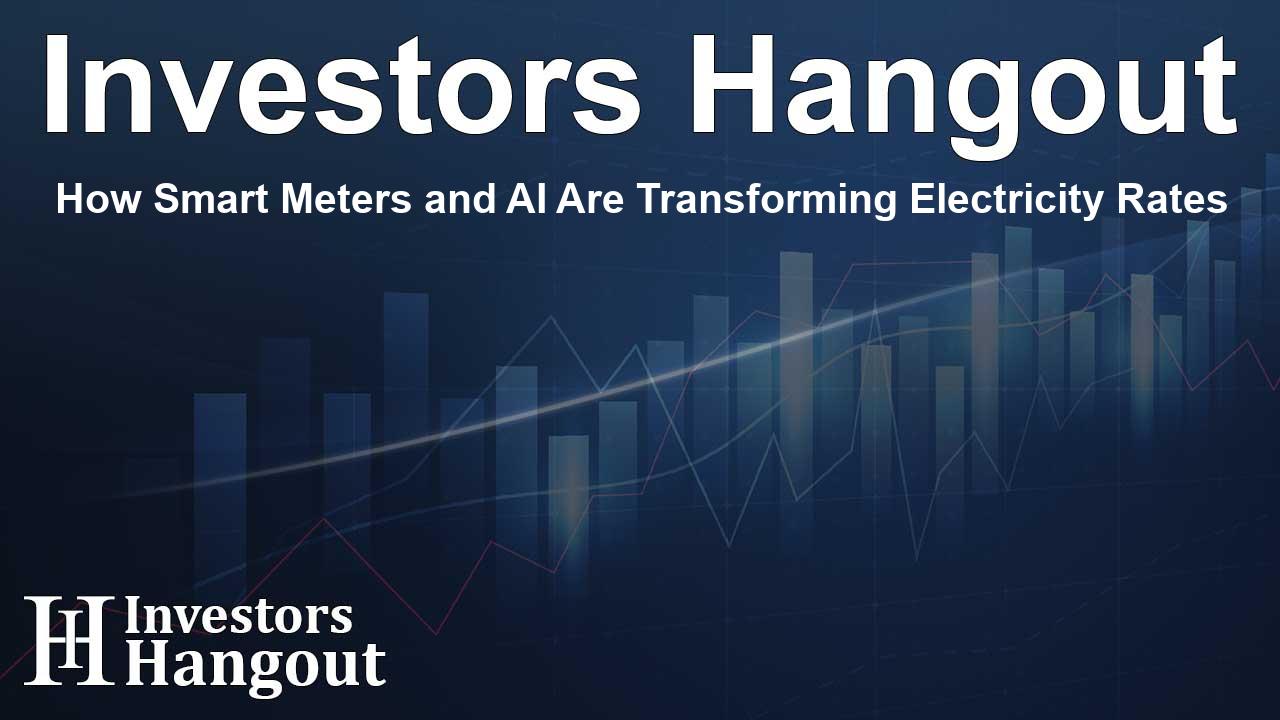How Smart Meters and AI Are Transforming Electricity Rates

Revolutionizing Residential Electricity Rates with AI
In recent years, the energy landscape has radically changed, thanks to the introduction of advanced metering infrastructure (AMI) and the increasing role of artificial intelligence (AI) in utility management. Today, utility companies can harness the power of smart meters and AI-enabled technologies to design innovative and complex billing structures that cater to a diverse range of consumer needs.
Modernizing the Rate Structure
Traditionally, residential electricity rate structures have remained relatively unchanged for decades. While technologies have evolved—allowing individuals to generate and store their energy—rate plans have not kept pace with these advancements. It's crucial to educate consumers about how their energy consumption choices impact both their bills and overall grid stability.
According to an insightful report, the integration of smart meters provides an unprecedented amount of data that can help utilities understand usage patterns better. This data can be leveraged to develop more personalized and flexible electricity rates.
Understanding User Needs
Pritil Gunjan, a knowledgeable director at Guidehouse Research, highlights that AI's evolution has significantly improved our ability to analyze energy consumption. This is not merely about refining existing billing styles—it's about innovating and presenting new frameworks that cater directly to consumer needs.
Recommendations for Utility Companies
The report outlines a strategic framework for utility companies looking to adapt to these changes. Here are the key recommendations:
- Utilize detailed energy usage data to create unique customer segments.
- Formulate complex rate structures that reflect the diversity of customer profiles, including low-income households and electric vehicle (EV) owners.
- Implement AI-based solutions to educate customers about the benefits and intricacies of new rate plans.
By following these recommendations, utility providers can enhance customer satisfaction while also ensuring that their rate structures are fair and representative of market trends.
The Impact of New Technologies
Innovative technologies lead to more accurate billing, which can ultimately lower prices for consumers and introduce new revenue opportunities for utilities. These strategies are not just about cost—they also promise higher resilience in service delivery and increased support for vulnerable consumer populations.
About Guidehouse Research
Guidehouse Research acts as the vital intelligence arm of Guidehouse, offering comprehensive analysis and benchmarking services across various industries. Their expertise lies in understanding the dynamics of global clean technology markets, which is particularly important in today's rapidly evolving energy sector. Their research methodologies are meticulously designed to merge industry analysis with evaluations of technology trends to offer a holistic view of emerging infrastructure systems.
Guidehouse's Role in the Future
As a firm dedicated to advisory services, Guidehouse is committed to helping clients navigate the complexities of regulatory environments while harnessing data-driven insights for sustainable growth. This emphasis on technology and efficiency positions Guidehouse distinctly in the market and aligns with ongoing shifts toward data-led innovation.
Frequently Asked Questions
What is AMI and how does it benefit consumers?
Advanced Metering Infrastructure (AMI) enables utilities to collect data on energy consumption in real-time, allowing for more tailored and flexible rate structures that directly benefit consumers.
How is AI transforming electricity rate design?
AI enhances the analysis of energy usage patterns, helping utilities to predict consumer needs and create more effective rate plans that reflect the diversity of their customer base.
What types of customers can benefit from new rate structures?
New complex rate structures cater to various customer types, including low-income households, electric vehicle owners, and others, ensuring fair access to energy pricing.
How do smart meters impact customer engagement?
Smart meters empower consumers with real-time data about their energy use, which leads to increased awareness and more responsible energy consumption choices.
What future trends should we expect in utility billing?
As technology evolves, we can expect more dynamic pricing models, real-time billing updates, and a stronger emphasis on sustainability within utility billing practices.
About The Author
Contact Henry Turner privately here. Or send an email with ATTN: Henry Turner as the subject to contact@investorshangout.com.
About Investors Hangout
Investors Hangout is a leading online stock forum for financial discussion and learning, offering a wide range of free tools and resources. It draws in traders of all levels, who exchange market knowledge, investigate trading tactics, and keep an eye on industry developments in real time. Featuring financial articles, stock message boards, quotes, charts, company profiles, and live news updates. Through cooperative learning and a wealth of informational resources, it helps users from novices creating their first portfolios to experts honing their techniques. Join Investors Hangout today: https://investorshangout.com/
The content of this article is based on factual, publicly available information and does not represent legal, financial, or investment advice. Investors Hangout does not offer financial advice, and the author is not a licensed financial advisor. Consult a qualified advisor before making any financial or investment decisions based on this article. This article should not be considered advice to purchase, sell, or hold any securities or other investments. If any of the material provided here is inaccurate, please contact us for corrections.
